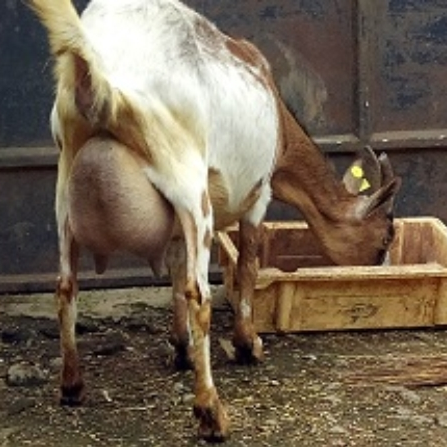
Dairy goat feeding. Poor management of dairy goats is one of the main problems facing the dairy goat sub-sector in Kenya.
Shambah Dairies farm based in Kangema, Murang’a County is improving smallholder dairy goat farmers’ output by offering them training at affordable fee enabling the farmers possess the necessary skills in dairy goat farming.
The farm which was started in 2010 is proud to have natured more than 1000 farmers across the county and beyond giving them the basics on how to do dairy goat farming management.
“We welcome all farmers who want to learn whether in groups or individual levels. Individual farmers pay Sh200 while those who come as a group pays less depending on their number,” said Hellen Kamba, the farm manager.
Shambah Dairies takes farmers through feeding, housing and protection of the goats against diseases.
“Poor management of dairy goats is one of the main problems facing the dairy goat sub-sector in Kenya. Although farmers spend a lot of money buying dairy goats, it is a pity when one visits their homesteads and sees the condition of the goats, including the goat sheds,” said Kamba adding that selective breeding is important, but farmers should know that breeding alone cannot give a good quality dairy goat.
To help farmers have practical learning sessions, the farm has its own goats and facilities through which they offer the trainings.
“We keep over 80 dairy goats in total,” says Hellen. “Currently the adults are 40 and the rest are kids. Of the mature goats, we milk 30.”
READ ALSO: Eldoret dairy school brings hands on training to farmers
READ ALSO: Research firm offers training to poultry farmers
READ ALSO: Agriculture center creates millionaires through free trainings
The farm has three breeds of goats namely Alpine (German, British and French), Toggenbergs and Saanens.
Hellen advises farmers that dairy goats should be given a balanced diet like proteins rich feeds such as desmodium, lucerne, calliandra, green leaves and nutritious salt lick, which is constantly in their cages.
“To achieve maximum production from your goats, 50 per cent of your efforts should go to feeding, 25 per cent to their general care and 25 per cent to proper breeding,” said Hellen, adding that they feed their animals on hay and premix daily.
Kiringai Kamau is a dairy goat farmer and a beneficiary of Shambah Dairies. After his coffee farmfailed, he decided to buy the goats at Sh12, 000 each from Nyeri. Today he is one of the suppliers of goat milk to Kibidav Dairiesin Murang’a.
“We deliver 80 litres after every five days to Kibidav Dairies, which specialises in goat milk products such as yoghurt and fresh milk under the brand name, Toggs Dairy Goat Milk,” says Kamau.
Dairy goats need less land or space and feeds as compared to the same number of dairy cows. For instance half an acre of Napier grass can support five dairy goats while the same measure of Napier grass only supports one dairy cow.
One dairy cow can gives 20lts of milk a day and a litre of dairy cow milk sells at Sh37. This is low as compared to five dairy goats which can give 13lts of milk daily fetching Sh103 per liter.
















Comments powered by CComment